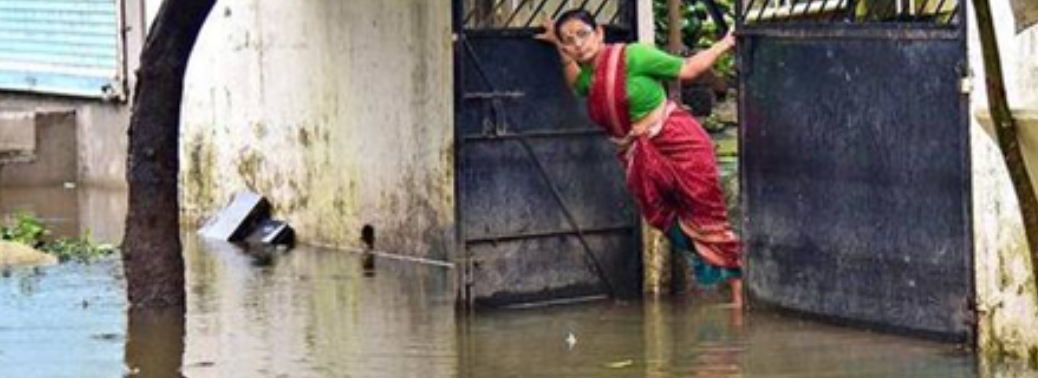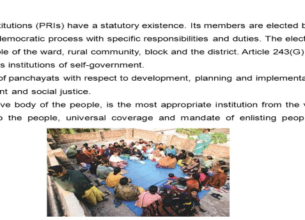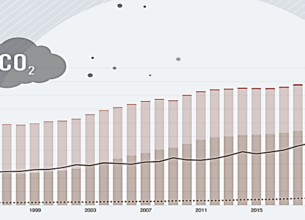MAHARASHTRA TO SET UP TASK FORCE ON CLIMATE CHANGE
09, Aug 2019

Prelims level : Environment- Disaster Management, Climate Change, Geography of India
Mains level : GS-I- Changes in critical geographical features (including waterbodies and ice-caps) and in flora and fauna and the effects of such changes. GS-III- Conservation, environmental pollution and degradation, environmental impact assessment. GS-III- Disaster and disaster management.
- Context: In the wake an unprecedented flood like situation and record rainfall this season, the State government will constitute a task force of local and global experts to study impact of climate change on Mumbai.
What the Task Force Will Do?
- The task force will study measures taken against flood and unplanned reclamation in cities such as Venice, Geneva and London, and coordinate with the European Climate Change Programme of the European Union to prepare a blueprint.
- The task force will be set up by the Environment Department in coordination with Mumbai First, a not-for-profit policy influencing think tank.
What is Urban Flooding?
- Flooding is an accumulation of water in an area either by direct rainfall irresistible to the volume of drainage systems or a spill of huge amount of water from water bodies beyond normal limits.
- It could be localized, impacting a small area or could be vast or massive, impacting very large area. Urban flooding is caused by heavy rainfall overwhelming drainage capacity.
- Urban flooding is one of the types of flood.
- Urban flooding is the inundation of property in more densely populated areas caused by rainfall and sometimes triggered by events such as flash flooding or snowmelt.
Impacts of Flood:
- It already has large economic and social impacts.
- These are very likely to increase if no changes are made to the unplanned development of buildings and infrastructure and poor management of urban drainage.
- Urban floods are a great disturbance of daily life in the city.
- Urban flooding is a condition that has repetitive impacts on communities. Urban areas are densely populated and people living in vulnerable areas suffer due to flooding. It is not only the event of flooding but the secondary effect of exposure to infection also has its toll in terms of human suffering.
- Damage to vital infrastructure, loss of life and property.
- Disruption in transport and power and incidence of epidemics, loss of livelihood.
- Urban flooding cause localized incidents to major incidents, resulting in cities being inundated from hours to several days.
- Deterioration of water quality and risk of epidemics.
- Temporary relocation of people, damage to civic amenities.
Natural causes:
- Meteorological Phenomenon: Cyclone like Ockhi, Roanu, Vardah making landfalls in coastal areas induce heavy rainfall finally leading to flooding.
- Excessive rainfall in some cases.
- Change in course of river: Eg: Kosi in Bihar
Man-Made Causes are as Follows:
- More migration causes reduced availability of land and it finally leads to more encroachment of water bodies.
- Disposal of waste results in waste clogging the natural channels and stormwater drains.
- Encroachment:
- More migration -reduced availability of land – higher economic value of land – more encroachment of water bodies – reduced economical services from water bodies.
- Eg-Charkop Lake in Maharashtra, Ousteri Lake in Puducherry, Deeporbeel in Guwahati are well known examples of encroachment.
- Illegal mining activities and Illegal construction have an extremely damaging impact on the water body.
- Sudden release or failure to release water from dams can also have a severe impact.
- The badly planned construction of bridges, roads, railway tracts causes drainage congestion.
- Unplanned release of water from dams and unplanned tourism activities
- Absence of drainage and stormwater network in many places.
- Rapid urbanization causes permeable soil surfaces being replaced by impermeable concrete floors leads to urban flooding.
- Increase in urban rainfall extremes and temperature.
Action That Needs To Be Taken:
- Create flood plains and overflow areas for rivers and separating rainwater from the sewer system.
- Install water infiltration and attenuation systems, Sustainable drainage: permeable pavement, sidewalks, and gardens.
- Strong laws should be in place to protect urban lakes the water bodies.
- The catchment and feeder channels need to be protected.
- There is a need to set up an umbrella authority to protect and conserve the water bodies.
- Funds should be provided for water supply to only those cities that have brought their own water sources under protection.
Conclusion:
- Floods in India are an outcome of both natural and man-made changes.
- However, the latter has been more responsible for floods in the current age of Anthropocene.
- Thus, a comprehensive urban planning which reconciles both environment and economic needs is required.








